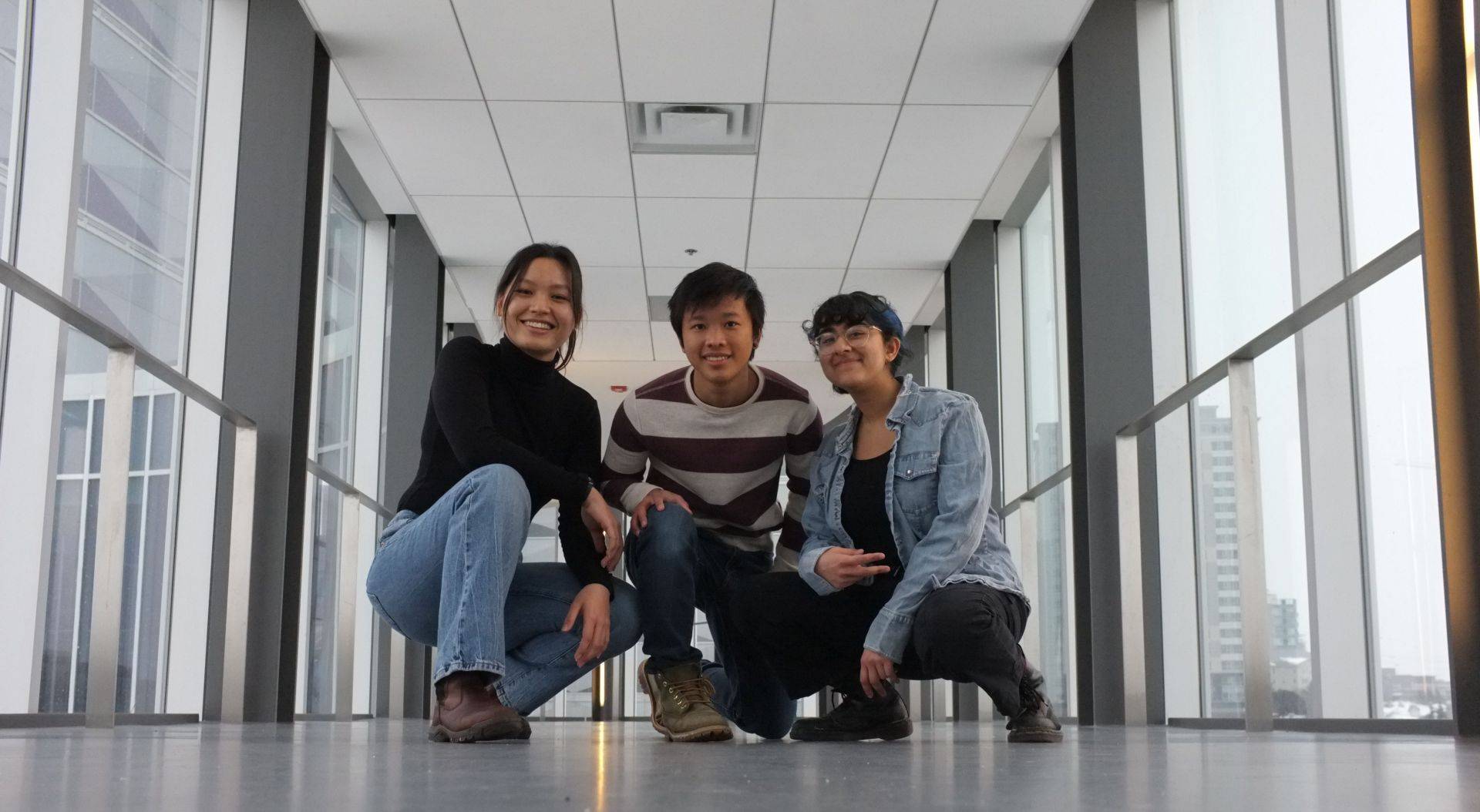CAPSTONE DESIGN PARTICIPANTS

Yuna Oh

Mabel (Xianyu) Song

Emily (Jia) Guo

Dulasi Vasudevan

Angelina Tan
Lemon-Squeezy
6
Privacy and safety should not have to be the main concern when the need to urinate arises while in public or outdoors. With Easy-Peesy, women will no longer need to hide in bushes, squat in uncomfortably awkward positions, or risk getting a urinary tract infection (UTI) from unsanitary environments. Our female urination device (FUD) enables females to urinate standing up with minimal exposure of the body. With an adjustable length and curvature, Easy-Peesy is designed to provide easier set-up and improved user's comfort.
Faculty Advisor: Zhao Pan

Mable Chuah, Nikolas Hartad, Ambreen Ahmed
leafcore
7
Greenhouse gases and energy storage are two critical issues as our world increases in demand for energy. The 'artificial leaf' by the Materials Interface Foundry lab aims to tackle the problem with an energy storage device, storing CO2 as useful products. Our team works on the flow pattern design of the device's reactor. The goal is to simulate and optimize the system's efficiency. Advancing this project will reduce CO2, while providing a solution for renewable energy storage, helping shift our dependence from fossil fuels.
Faculty Advisor: Yimin Wu

Daniel Blackmore

Chris Kang

Carmen Huynh
Improving the Cost and Environmental Sustainability of Sidewalk Snow-melting Systems
8
According to the American Society of Heating, Refrigerating, and Air-Conditioning Engineers, hospitals are required to keep their sidewalks clear of snow and ice accumulation at all times. Currently, in Canada, the main methods of achieving this involve heating the sidewalk from underground, such that any snow will be melted immediately. By redesigning the current heating systems to include wastewater heat recovery, we hope to reduce the greenhouse gas emissions and the operating costs associated with sidewalk snowmelt systems.
Faculty Advisor: David Mather

Tran Cu Lam Le

Seth Lauzon

Heong Joo Yoo

Andrew (Byung Min) Ko
Eco-Brakes
9
Despite contributing to 21% of all traffic-related emissions, brake dust is severely under-researched and under-reported. With this in mind, Eco-Brakes is hitting the brakes on emissions! Our team is developing an active brake-particle capture system adaptable to any standard brake assembly. Targeting a 50% reduction in brake particle emissions, the device uses a suction system enhanced by cyclonic separation technology ensuring that even the smallest of particles are filtered out.
Faculty Advisor: Peter Teertstra

Vince McDonald

Nathan Snider

Joshua Balfour

Jordan Coutts

Gabriel Lalancette
Project Field Op
10
Large-scale construction projects require extensive surveying with the potential for tens of thousands of precisely marked locations. These are projects like pipelines, spanning thousands of kilometers; or with the shift towards renewable energy, solar farms with thousands of panels. The surveying activities are time and labor-intensive while remaining critical to project success. The semi-automated Survey Staker aims to optimize the efficiency of the staking process while ensuring its accuracy. The system eliminates the human labor required of the process and is towed behind utility vehicles.
Faculty Advisor: Marco Alfano

Syed Armghan Haider

Mohammad Sajjad

Mimi Du

David Obadun

Chris Lee
Atmospheric CO2 Capture
11
The aim of this project is to capture carbon dioxide from the atmosphere while emitting net negative carbon emissions. The process of carbon sequestration involves 2 stages. The first stage extracts the carbon from the atmosphere using sodium hydroxide whilst the second stage then filters the carbon-rich liquid using calcium hydroxide. Using these chemicals the carbon is captured and then stored as a solid compound commonly known as limestone. Limestone can be removed from the device and permanently stored underground or used in other industrial processes as a raw material. Overall this device will help reduce global carbon emissions and prevent the worsening effects of climate change on our planet.
Faculty Advisor: Zhao Pan

Dante DiGiuseppe, Christina Pateman, Delainey Lindstrom-Humphries, Kyle Hall, Brock Taylor
Compressed Air Engine for Energy Storage
12
Energy storage technologies support better power management, especially with the increasing uptake of renewable power generation. Compressed Air Energy Storage (CAES) is one of the best bulk power management technologies due to its high system power rating, long discharge time, and functionality across a diverse range of geographies, however, it trails in efficiency. The CAES Air Engine is a novel air engine designed specifically for CAES systems with the aim of reducing free air expansion losses and improving the efficiency and viability of CAES.
Faculty Advisor: Roydon Fraser